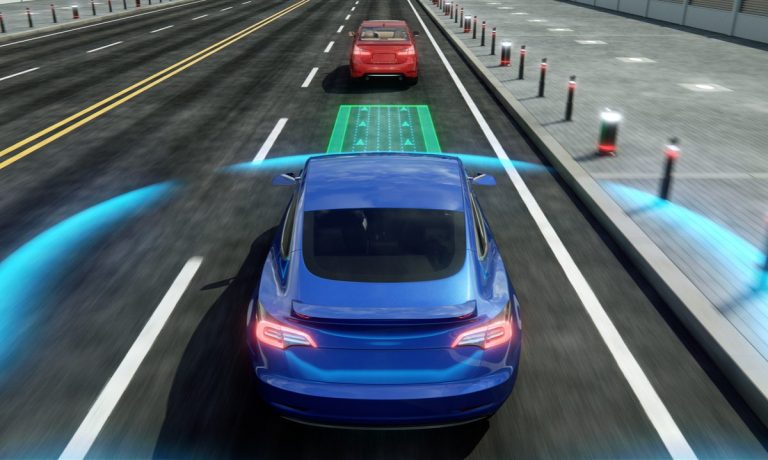
Since the industrial revolution first brought machines into prominence, self-driving vehicles have populated future visions.
And with the news that the autonomous delivery robot marketplace is getting a shot in the arm from artificial intelligence (AI), observers are wondering just when self-driving, autonomous vehicles will be a scalable, real-world reality.
After all, it was just this week that Alphabet announced in its quarterly materials and earnings call that it was investing an additional $5 billion in Waymo, the autonomous-driving business that originally took to the road over a decade and a half ago as Google’s own self-driving car project. Waymo has yet to turn a profit.
Meanwhile, General Motors (GM) said on Tuesday (July 23) it was “indefinitely suspending” work on Origin, the name of the autonomous vehicle produced by GM’s self-driving subsidiary Cruise. Cruise’s driverless taxi product, for its part, has restarted test operations in Dallas, Houston and Phoenix, the company said during its Tuesday earnings call, noting that the service is in a testing phase-only and will not be open to customers.
“Our vision to transform mobility using autonomous technology is unchanged, and every mile traveled, and every simulation, brings us closer because Cruise is an AI-first company,” said GM CEO Mary Barra in her most recent shareholder letter.
Electric vehicle (EV) automaker Tesla, perhaps the company most synonymous with self-driving cars, or at least promises of them, is postponing its planned Aug. 8 robotaxi unveiling to October. CEO Elon Musk had predicted in 2019 that Tesla would launch a robotaxi by 2020.
“The value of Tesla overwhelmingly is autonomy,” Musk said on the company’s earnings call Tuesday. “These other things are in the noise relative to autonomy.”
Read more: From Factories to the Fast Lane, Unpacking Autonomy’s Potential
Autonomous vehicles (AVs) encompass a broad range of technologies that enable vehicles to operate without human intervention. This category includes self-driving cars, trucks, drones and other robotic delivery systems. The development of AVs is being driven by advances in artificial intelligence, machine learning, sensors, and connectivity, with major players and upstarts alike leading the charge.
One of those upstarts, Kodiak, announced on Tuesday that it plans to launch a fully driverless commercial trucking service in partnership with Atlas Energy Solutions, a provider of sand and oilfield logistics.
“The Permian Basin’s expansive private lease road network, which expands across the Delaware and Midland Basins, is an ideal environment in which to introduce autonomous trucking in North America,” Atlas Chief Supply Chain Officer Chris Scholla said in a statement.
“Deploying driverless trucks with Atlas marks the beginning of a new era for autonomous vehicles,” Kodiak founder and CEO Don Burnette added. “Our partnership with Atlas will make us the first autonomous semi-truck company to establish commercial driverless operations, and the first company to make autonomous trucking a real business. We look forward to scaling our trucking product not only in the Permian Basin, but also over-the-road.”
Elsewhere, Toyota-backed startup May Mobility announced last week (July 16) that more than 10,000 riders have used its goMARTI autonomous vehicle service in Grand Rapids, Minn. since its launch in September 2022.
“I believe in our lifetime, not just automobiles, but every piece of moving machinery on the face of the earth will be automated. And the smart infrastructure that oversees it and supports it will also be automated,” May Mobility CFO Anna Brunelle told PYMNTS in February for the series “Day In The Life Of A CFO.”
Read more: Musk’s xAI Plans Spotlight Tesla’s Autonomy Challenges
While the potential benefits of autonomous vehicles are substantial, their widespread adoption also presents challenges. These include regulatory hurdles, cybersecurity risks and the potential displacement of jobs in sectors such as trucking and logistics. Ensuring the safety and reliability of AVs is paramount, particularly in mixed-traffic environments where human drivers and autonomous vehicles must coexist.
As PYMNTS previously reported, the U.S. Department of Justice (DOJ) is investigating Tesla’s Autopilot and Full Self-Driving (FSD) systems following crashes that continued to occur despite a December recall of over 2 million vehicles.
“The environment is becoming much more complex to manage, which is where more advanced technologies come into the picture, and why you need data,” NoTraffic CEO and Co-founder Tal Kreisler told PYMNTS in April about connected autonomous systems.